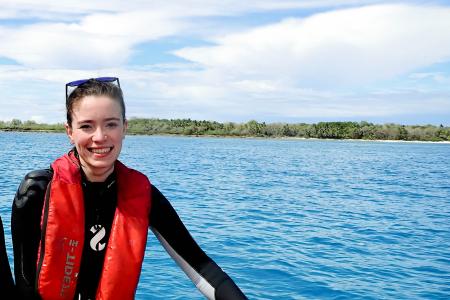Margaux Steyaert
As part of my PhD thesis I am investigating the diversity and drivers of tropical coral reef cryptofauna communities in the Indian Ocean.
Much of the diversity found on tropical reefs is composed of small cryptic invertebrate organisms that live in or on the coral matrix, including mobile species such as crabs and shrimps, as well as sessile fauna including sponges, tunicates and bryozoans. However, little is known about these organisms as they are often understudied in comparison to more conspicuous groups on the reef like fish and hard corals. These hidden communities are vital for the functioning of healthy reefs but are difficult to study as they are often encrusted, burrowed and hidden within hard corals, meaning sampling them directly from their natural habitat can be destructive.
This is why I am using Artificial Reef Monitoring Structures (ARMS); these highly standardised artificial devices provide a range of microhabitats for cryptofauna to recruit onto. These enable me to sample these communities in a standardised and replicable manner without harming the reef structure. Along with ARMS, I also use genetic tools and photography to analyse the diversity of cryptic invertebrate communities.
I am working to describe the baseline diversity of these understudied communities as well as investigate how these are shaped by fluxes in local environmental conditions and sedimentation. In addition, I am also interested in examining how microbial communities interact with invertebrate communities and how we may include these two communities into coral reef biomonitoring programs. To complete this work I am collaborating with teams at Imperial College London, Stanford University and the Zoological Society of London (ZSL). This project is fully funded by the Bertarelli Programme in Marine Science.


